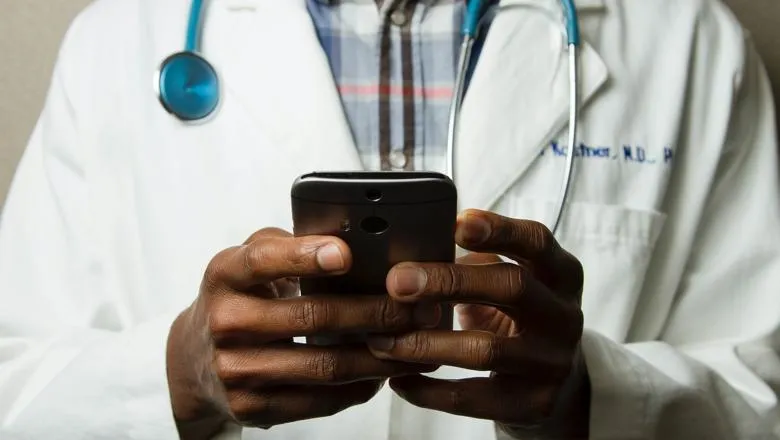15 June 2020
What can rural India can teach the urban US and UK about healthcare?
The role of technology in tackling health inequalities

Adler Archer is a PhD student at King’s Business School, and systems engineer researching approaches to involving healthcare providers and patients in health systems innovation. He also serves as a Director on the Board of Intelehealth, a global telemedicine charity.
He spoke to us about how COVID-19 is exposing and exacerbating health inequalities, and how carefully designed digital health technology can deliver healthcare in communities that face multiple barriers to accessing it.
Tell us more about your research area and how it relates to the work of Intelehealth
I’m motivated by finding innovative ways to engage healthcare providers and patients in health systems transformation. Technology has potential to create systems that deliver high-quality care at price point that is accessible and sustainable for all, but to make these innovations really viable and valuable, we need both healthcare professionals and patients to have a say in the tools being created.
Intelehealth is an example of a tool that’s driven by a clear real-world need, and which needs to be accessible to and trusted by multiple stakeholders to be effective. In rural Asia, where it operates, there are significant limitations on the number of patients that doctors can see face to face promptly. This is mainly due to the sheer number of people in rural areas who need care. Our technology integrates artificial intelligence and tools like Zoom and WhatsApp to empower rural community health workers to collect and transmit a prioritized list of patient health information to doctors in urban settings. This dramatically reduces the time burden on doctors and ensures the most urgent are addressed first. It depends on there being trust both from the patients and from the doctors.
What are the rules for making tech-based health innovations work?
First is to be led by need. At Johns Hopkins Medicine, I'm working in a group that matches healthcare providers who have medical software ideas with creatives, engineers, and business advisors who can deliver the software. The teams receive four months of training on how to launch digital health start-ups and then pitch their ideas to investors.
Because it’s the healthcare providers that propose the software ideas, we’ll see digital health solutions that meet real-world problems. We also find that the designers, developers, and business partners have a better understanding of the challenges that providers and patients are facing.
Second, you need to understand patient need. There are significant issues of trust of course, but even at a basic technical level you need to design something that will work on cheaper, typically Android phones, and won’t rely on a patient having constant access to high speed broadband.
Has COVID-19 exacerbated the issue of unequal access to healthcare?
Yes, but sheer necessity has also reinforced the role that technology can play in increasing access for patients and the reducing burdens and risks for providers.
To support healthcare providers tackling COVID-19, Intelehealth launched an online tool to help healthcare workers stay safe on the job. Infection control and the availability and correct use of Personal Protective Equipment (PPE) have both become major issues so we have provided modules training healthcare workers on infection control within healthcare settings, as well as on using PPE correctly and on viable alternatives or acceptable ways to reuse some PPE when new stock is unavailable. We’ve also set up a What’sApp helpline for PPE questions.
Finally Intelehealth is providing self-assessment & symptom monitoring for healthcare providers, and mental health counselling for health workers. By keeping healthcare workers safe and well they are better able to care for patients.
How much of what Intelehealth is doing in India can be applied to urban settings where COVID-19 is exposing big health inequalities based on ethnicity and income?
Several studies have highlighted that minorities in the United States suffer under more preventable diseases and die earlier than white Americans. For example, black and white Americans are equally likely to suffer from coronary heart disease; but black Americans are 30% more likely to die from it. Mexican American mothers are twice as likely as white mothers to not have access to prenatal care until the third trimester, or not at all. Black men are ten times as likely as white men to die from HIV/AIDS.
In America, studies show that the issue is much deeper than sub-optimal access to care, though that is undoubtedly a significant consideration that telemedicine can help address.
Health disparities for ethnic and racial minorities are also driven by less health help-seeking, because people fear discriminatory care and sub-standard treatment by healthcare providers and systems. In fact, researchers at Johns Hopkins Medicine have documented how stigmatizing language in electronic health records can result in inequitable care.
So does technology offer the solution to tackling health inequality?
Telemedicine can’t fix discrimination and failings in cultural competency by healthcare systems and at the level of individual healthcare professionals, but it does provide a new medium for delivering care to patients who deserve better health and healthcare.
By building patient-centered solutions, telemedicine can engage people in the health system in a way that feels more comfortable. This channel also allows for providing far more than basic primary care. It extends into addressing some of the social and legal determinants of health; after all, mental health, environmental factors, employment status, and legal concerns all impact physical well-being. Our team at Intelehealth is actively considering how to build technological infrastructure that can integrate solutions to address a broader array of patient needs in Baltimore and New Haven in the US, and in London. It starts with putting the patient first though, and acknowledging that some groups are systematically disadvantaged through no fault of their own.

